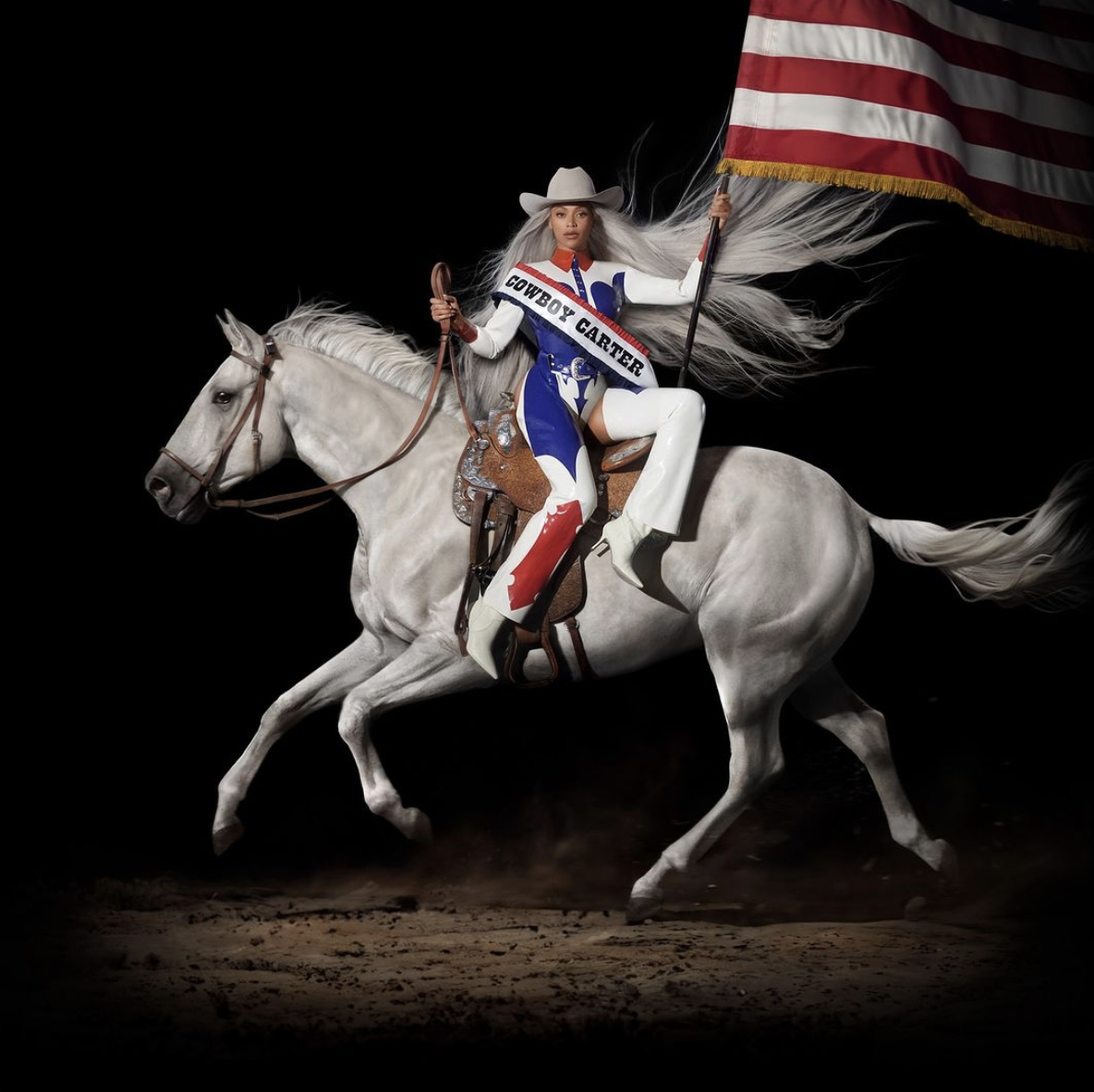
Beyoncé is back in the saddle. The superstar announced yesterday that Cowboy Carter, her eighth studio album (also known as Act II: Cowboy Carter or Act II), drops on March 29. The cover artwork, which depicts Beyoncé atop a charging steed, debuted with the news. L.A.-based photographer Blair Caldwell captured the shot, echoing the equestrian theme of the cover of 2022’s Renaissance, by fashion photographer Carlijn Jacobs. Much like that cover was compared with John Collier’s Lady Godiva (1898), there’s a lot to unpack with Cowboy Carter‘s cover.
On Instagram, Beyoncé thanked fans for recently making her the first Black woman to top Billboard’s country chart before noting that Cowboy Carter, five years in the making, “was born out of an experience that I had years ago where I did not feel welcomed.” Her comment alludes to ire around her 2016 appearance singing alongside the Chicks at the Country Music awards. That year, the Recording Academy also declined to let her country track, “Daddy Lessons” off Lemonade, compete for best country song or solo performance.
“The criticisms I faced when I first entered this genre forced me to propel past the limitations that were put on me,” Beyoncé wrote. “[Cowboy Carter] is a result of challenging myself, and taking my time to bend and blend genres together to create this body of work.”
Beyoncé onstage the Chicks at the 50th annual CMA Awards in Nashville, Tennessee, 2016. Photo: Rick Diamond/Getty Images.
Before becoming Beyoncé’s personal photographer in 2019, Caldwell himself hailed from Texas. His vision for Cowboy Carter alchemizes symbols into an image depicting Beyoncé perched atop a horse at full gallop. She loosely holds its reins in one hand and brandishes an American flag in the other, dressed in a red, white, and blue one-piece and a sash reading “Cowboy Carter.” Her platinum strands, capped by a cowboy hat, cascade like a real Rodeo Queen’s. She’s even riding sidesaddle, like royalty.
We reached out to Caldwell, but he cannot comment presently. In an effusive post on X, he wrote of Beyoncé: “I can’t believe she believed in me on this level.”
Kehinde Wiley, Rumors of War (2019). © 2019 Kehinde Wiley. Courtesy of the Virginia Museum of Fine Arts, Times Square Arts, and Sean Kelly. Photo: Ka-Man Tse for Times Square Arts.
Obvious comparisons have already been drawn between this photograph and Kehinde Wiley’s paintings, which place Black people in imperial positions formerly reserved for white leaders. Given the cowboy’s import in American culture, presidents from Roosevelt to Regan have been immortalized while riding horses. But Blair’s composition also evokes Jacques-Louis David’s Napoleon Crossing the Alps (1801–05). The album cover imbues David’s vigorous movement with an outstretched, though not entirely visible, American flag that echoes the fluttering banner Marina Abramović wields in The Hero (2001).
Jacques-Louis David, Napoleon Crossing the Alps (1801–05). Photo: GraphicaArtis/Getty Images.
The cover’s symbolism further comes as the American cowboy is undergoing a reassessment, with artists reclaiming the lost legacy of Black cowboys and female cattle drivers. There’s also America’s fraught political moment to contend with, giving new meaning to the idea of “country.” Then again, as Beyoncé herself insists: “This ain’t a country album. This is a ‘Beyoncé’ album”